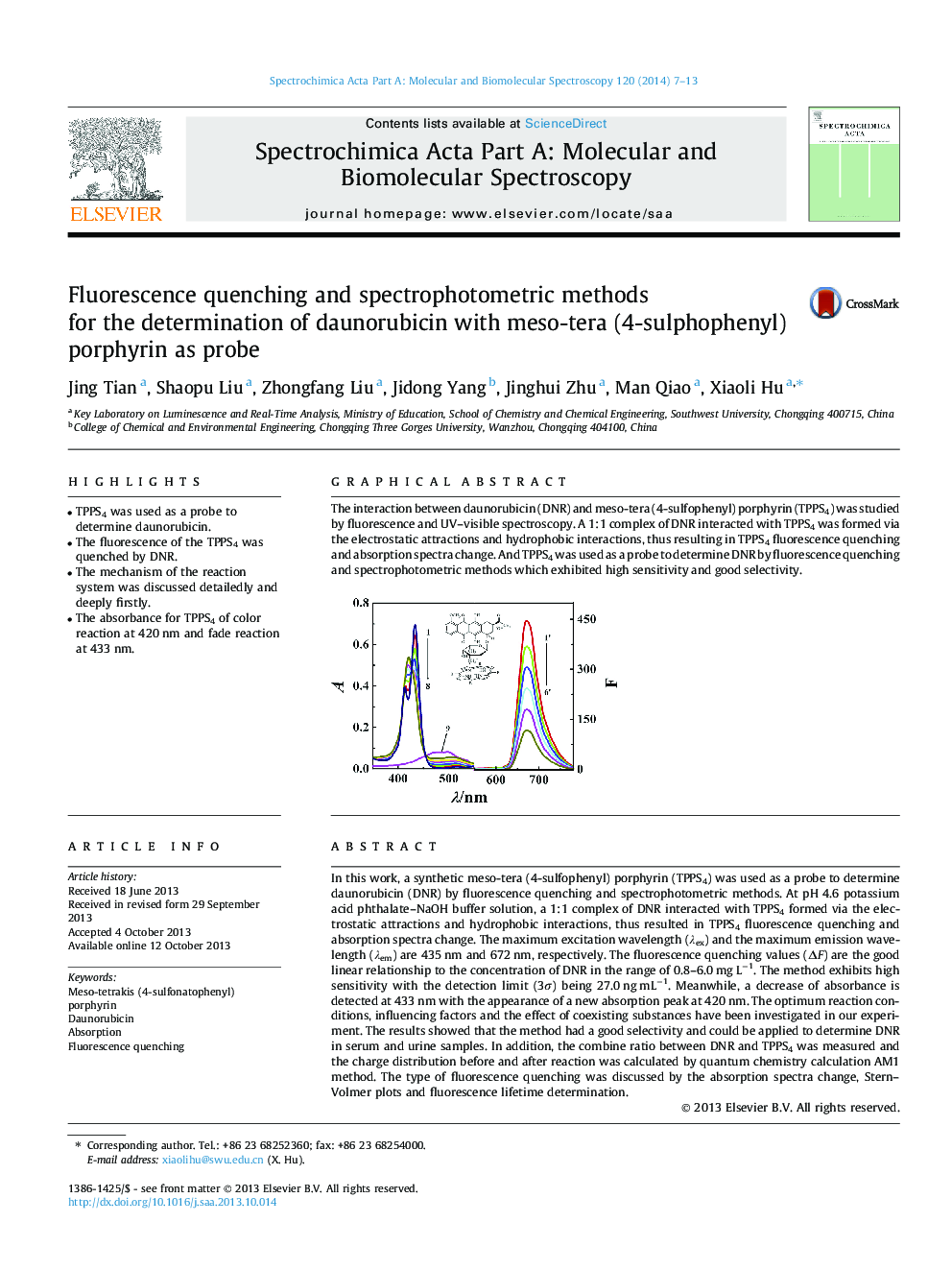| Article ID | Journal | Published Year | Pages | File Type |
|---|---|---|---|---|
| 1230816 | Spectrochimica Acta Part A: Molecular and Biomolecular Spectroscopy | 2014 | 7 Pages |
•TPPS4 was used as a probe to determine daunorubicin.•The fluorescence of the TPPS4 was quenched by DNR.•The mechanism of the reaction system was discussed detailedly and deeply firstly.•The absorbance for TPPS4 of color reaction at 420 nm and fade reaction at 433 nm.
In this work, a synthetic meso-tera (4-sulfophenyl) porphyrin (TPPS4) was used as a probe to determine daunorubicin (DNR) by fluorescence quenching and spectrophotometric methods. At pH 4.6 potassium acid phthalate–NaOH buffer solution, a 1:1 complex of DNR interacted with TPPS4 formed via the electrostatic attractions and hydrophobic interactions, thus resulted in TPPS4 fluorescence quenching and absorption spectra change. The maximum excitation wavelength (λex) and the maximum emission wavelength (λem) are 435 nm and 672 nm, respectively. The fluorescence quenching values (ΔF) are the good linear relationship to the concentration of DNR in the range of 0.8–6.0 mg L−1. The method exhibits high sensitivity with the detection limit (3σ) being 27.0 ng mL−1. Meanwhile, a decrease of absorbance is detected at 433 nm with the appearance of a new absorption peak at 420 nm. The optimum reaction conditions, influencing factors and the effect of coexisting substances have been investigated in our experiment. The results showed that the method had a good selectivity and could be applied to determine DNR in serum and urine samples. In addition, the combine ratio between DNR and TPPS4 was measured and the charge distribution before and after reaction was calculated by quantum chemistry calculation AM1 method. The type of fluorescence quenching was discussed by the absorption spectra change, Stern–Volmer plots and fluorescence lifetime determination.
Graphical abstractThe interaction between daunorubicin (DNR) and meso-tera (4-sulfophenyl) porphyrin (TPPS4) was studied by fluorescence and UV–visible spectroscopy. A 1:1 complex of DNR interacted with TPPS4 was formed via the electrostatic attractions and hydrophobic interactions, thus resulting in TPPS4 fluorescence quenching and absorption spectra change. And TPPS4 was used as a probe to determine DNR by fluorescence quenching and spectrophotometric methods which exhibited high sensitivity and good selectivity.Figure optionsDownload full-size imageDownload as PowerPoint slide
